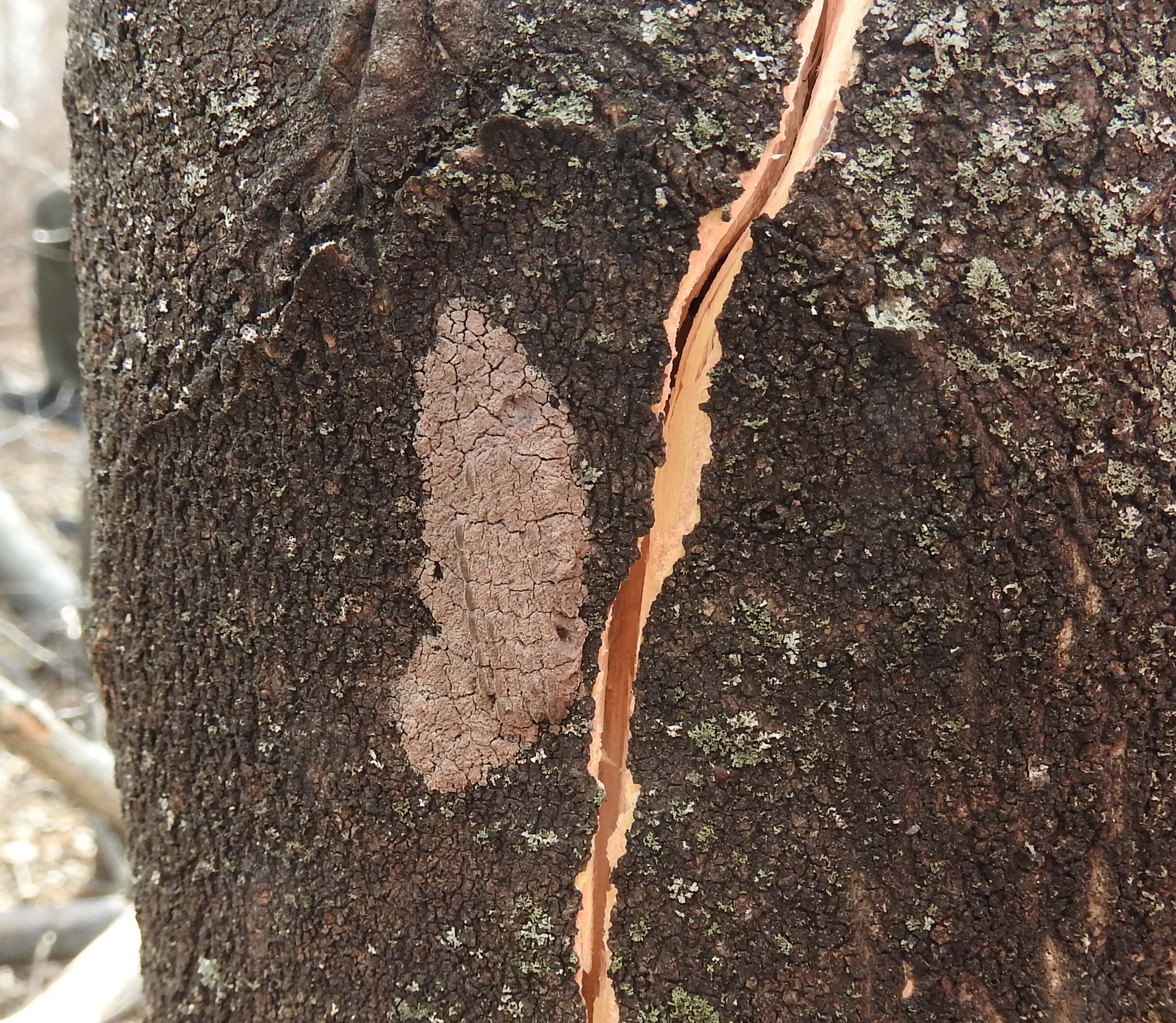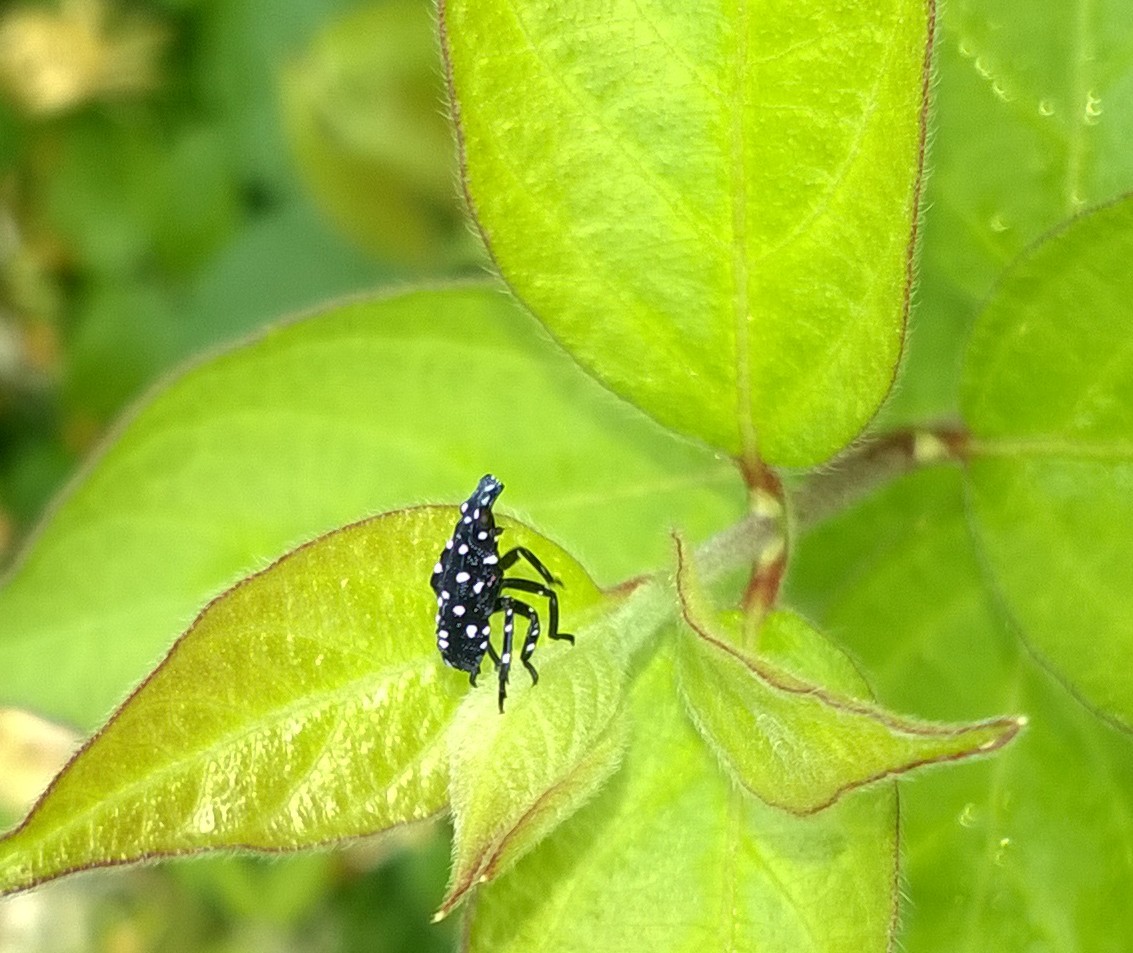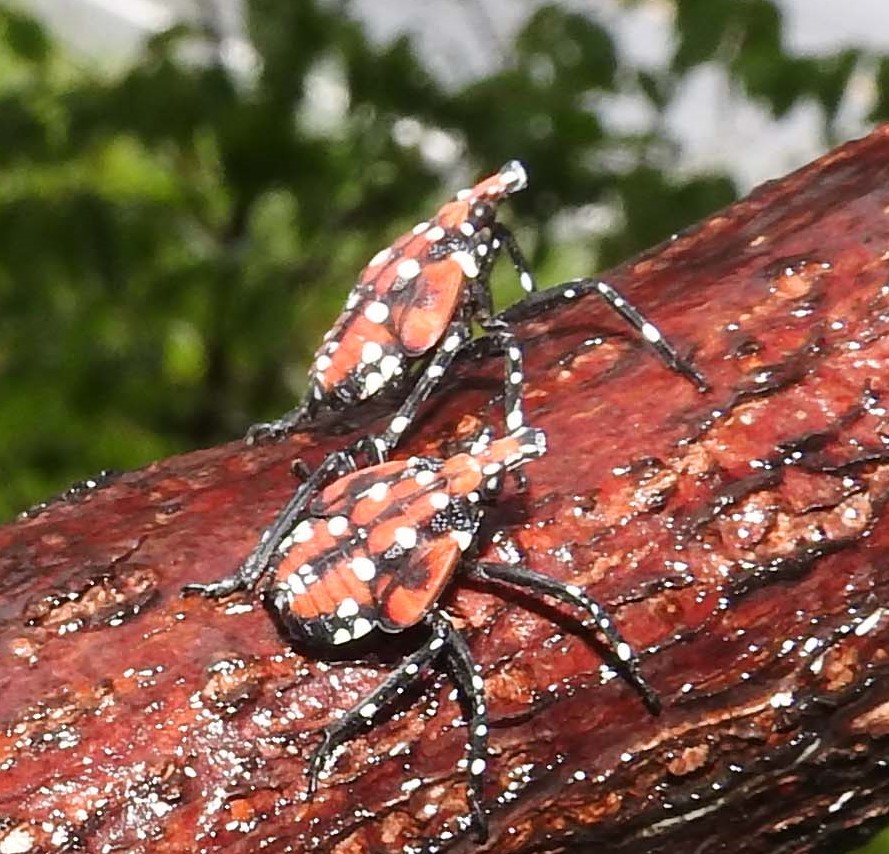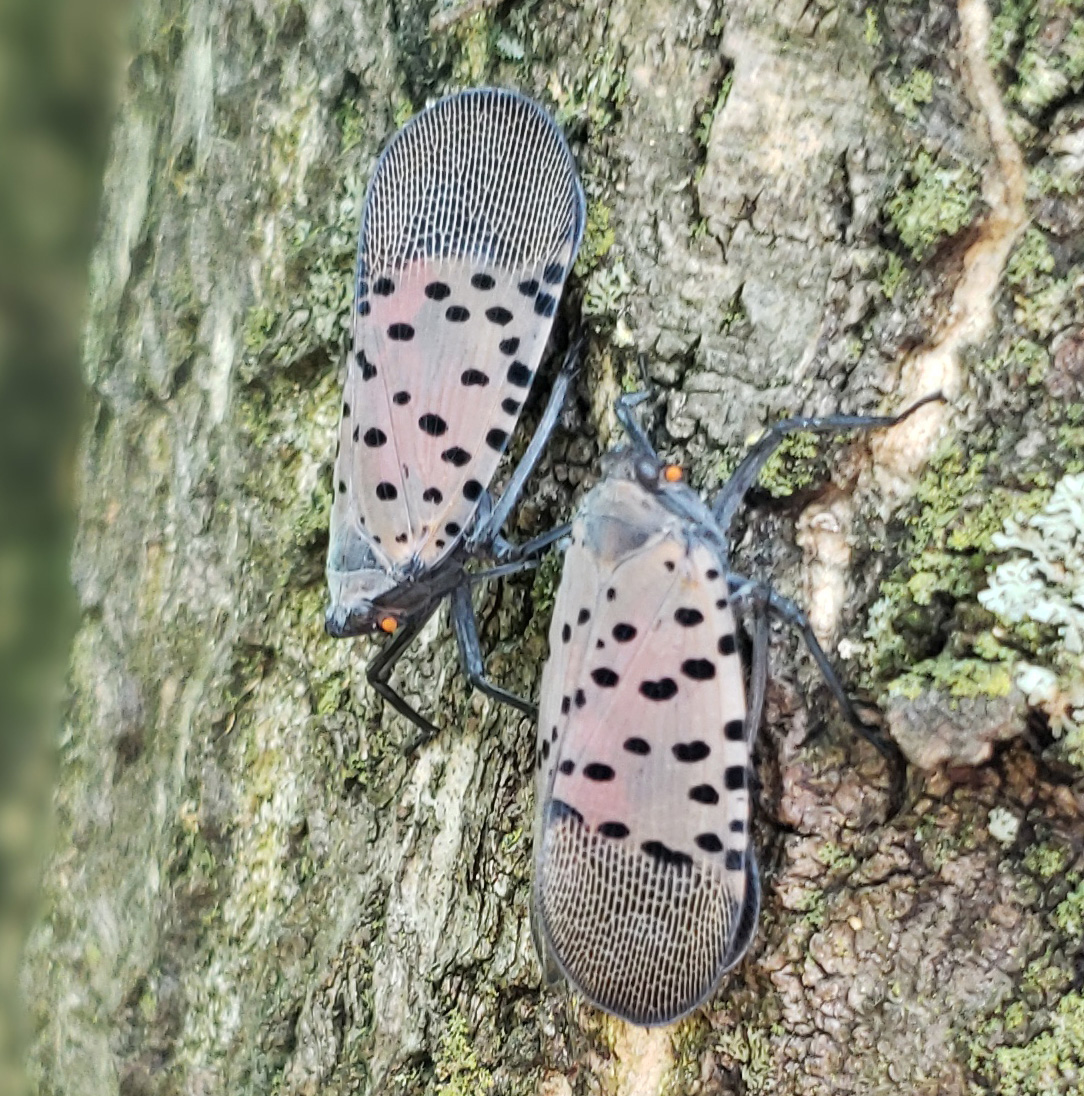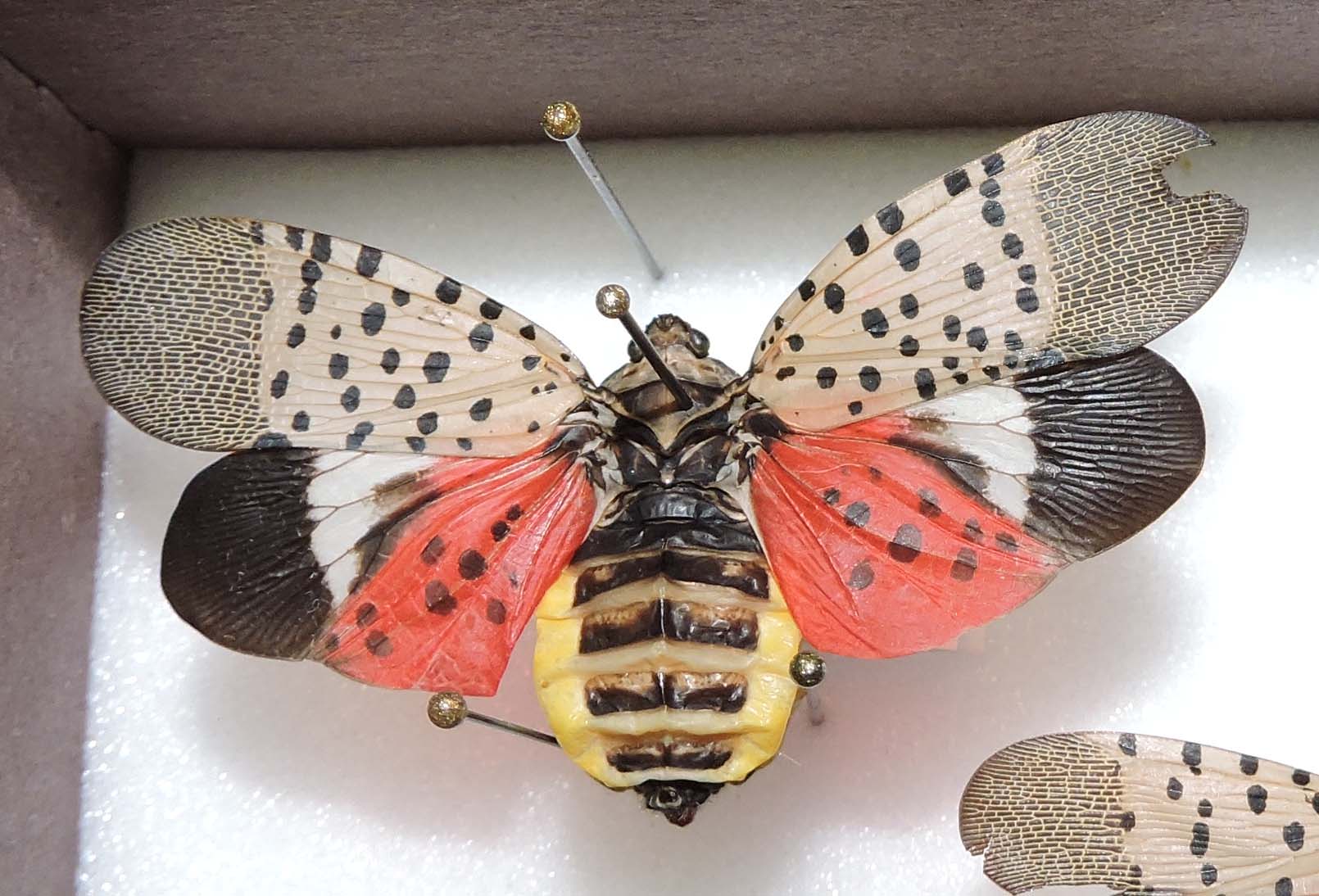Neonicotinoids: Venom
(dinotefuran), Assail (acetamiprid), Actara (thiametoxam)
Organophosphates: Malathion, Imidan (phosmet)
Carbamate: Sevin (carbaryl)
Pyrethroids: Mustang Maxx (zeta-cypermethrin), Brigade (bifenthrin). Danitol (fenpropathrin) provides the best residual control in this class.
Organic materials: Insecticidal soap, BoteGHA (Beauveria bassiana)
In early season, a single spray targeted against nymphs may be sufficient; a provisional action threshold is 15-20 nymphs per vine. Nymphs are much less damaging than the later adults. In the fall, when adults are moving into a vineyard, repeated applications may be needed; a provisional action threshold at this time is 5-10 adults per vine. There is risk to beneficial species and pollinators. It will be critical to observe Pre-Harvest intervals (PHI), and seasonal maxima (either in terms of number of applications, or amount of material (check label). It may be helpful to conserve the most effective insecticides, espcially those with short PHI, until the late season immigration of adults. The linked table contains useful information. Consult Pest Management Guides for Commercial and Home Fruit production, as well as Commercial Orchards.
SLF in Home Fruit: Much of the information presented above also applies to home fruit production. Home fruit trees and vines are more likely to be in small groups, possibly surrounded by ornamental and shade tree, some of which can harbor high numbers of SLF. SLF may form feeding aggregations on apple and peach in the fall; these are usually short-lived, and there will probably not be severe impacts on the trees or crops. Watch for accumulations of honeydew on the fruit, and use an appropriate insecticide if needed. As in commercial settings, grape will be the most vulnerable crop. Appropriate insecticides for home use include malathion, Sevin (carbaryl), pyrethroids (such as bifenthrin, permethrin or esfenvalerate), insecticidal soap and PyGanic (pyrethrum) (Sevin should not be applied on apple for the first month after bloom unless desired as a thinner). Residual life of pyrethrum is short, so this product may be more useful in the spring if nymphs occur in high numbers, than in fall, when there is continual immigration of new individuals. See also the fact sheet on SLF management in residential areas.
Biological control: Several native
generalist predators and parasitoids attack SLF, but not in
adequate numbers to achieve control. Natural enemies from the
home range of SLF are being studied under quarantine in the U.S.
Cultural control: Removal of tree of heaven
should be practiced, by cutting supplemented by herbicide
treatment. Leave a few larger trees, which are then treated
with dinotefuran. When adults return to TOH in late summer and
fall, they are killed by the insecticide.
If spotted lanternfly is found:
Circle traps for detecting SLF are available at Great Lakes IPM. If SLF is detected in traps or by other means, they should be reported for most counties. Finds within Frederick, Clarke and Warren need no longer be reported. Please report finds in other counties to you local VCE office. For Virginia vineyard infestations, please notify Doug Pfeiffer (dgpfeiff at vt.edu). In addition to reporting
the find, landowners should destroy the infestation if
possible. Several insecticides are very effective.
If the population has become widespread, there will be a
problem with continued immigration following initial control
with insecticides; therefore repeated applications may be
needed.
Resources:
VCE SLF Web Site
VT
Factsheet
SLF Management in Vineyards (English and Spanish)
SLF Management in Residential Areas (English and Spanish)
VT Pest Alert: English and Spanish
SLF Life Cycle Graphic: English
and Spanish
VDACS SLF link
USDA Factsheet in Spanish:
Best Management Practices for SLF
Look-alikes of SLF - avoid confusion!
Egg masses
Nymphs
Adults
Tree of Heaven Identification,
Coloring Sheet
Click here for a recorded presentation on SLF.
Updated 16 October 2025
